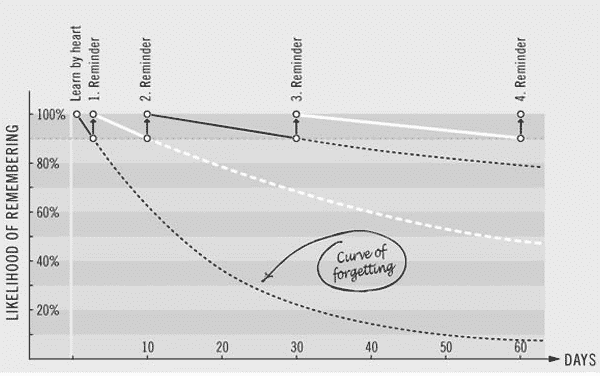
Common Problems in a Finance Department are Often Found in Usual Places 🏙️
Common Problems in Finance Department: CVs and interviews are the worse predictors of success in a job.
>Download Now: Free PDF Organisation Design
According to a report published by the HBR, the number 1 reason 82% of hiring managers gave for bad hiring decisions was inadequately qualifying candidates for key attributes required for the job during the hiring process (i.e., technical and soft skills).
After reading the HBR report, we were curious to find out why traditional hiring and recruitment methods were failing to qualify people for roles.
In 2010, we set up a longitudinal study to find out which hiring methods were the best at evaluating candidates for pricing, revenue, and commercial management roles.
Table of Contents:
I. Common Problems In Finance Department Are Often Found In Usual Places
II. Why Do Talented Pricing People Keep Leaving Your Commercial Finance Department?
III. Is It Really That Difficult To Find Talent For Specialist Finance Department Job Roles?
IV. Business Continuity Plan for Finance Department

Common Problems in a Finance Department are Often Found in Usual Places
What we did…
In 2010, we began our research to find out which hiring methods were best (and worse) at predicting success. This was implemented in new and challenging pricing roles and common problems in finance departments. We have continued to study the topic of talent evaluation since then. Furthermore, we have considerable insight and data analytics to support our clients’ high-performing teams and common problems in a finance department.
In our study, we examined traditional methods such as CV, interviews, and standard aptitude tests, and more robust talent evaluation tools:
– pricing and commercial tests
– team capability tests
– customised pricing assessment centres
We wanted to know which methods were better at solving common problems in a finance department, evaluating/qualifying key pricing skills, capabilities for specialist roles, and teams.
So far, we have assessed over 867 pricing and commercial executives in Australia and worldwide. They come from leading companies in Australia, the EU, and the US who were executives in pricing, revenue, and commercial management across B2B & B2C industries and markets.
To assess the effectiveness of all types of hiring methods, we developed a multi-trait assessment framework for pricing, revenue management, and commercial executives. How well does each method identify talent and potential for pricing and commercial roles?
This framework consists of a suite of traditional and modern hiring methods. It includes both key technical and soft predictors of expert pricing performance.
The framework was developed by Subject Matter Experts from pricing, psychology, and data science. This was done to ensure all questions were statistically tested, mapped, and strongly connected to key commercial pricing attributes and competencies.
Each executive was asked to complete the assessment program followed by a self-assessment form in which they ranked their own pricing capability across 9 commercial pricing competencies. They also provided explanations of their rating scores.
The hypothesis tested at the time was two-tailed:
– There would be no significant difference between hiring methods used during a typical hiring process.
– More advanced assessment methods in either qualifying key pricing attributes and/or predicting expert pricing performance.
Our findings showed quite a different story…
Survey Results on Common Problems in Finance Department:
1. We found that 56% of executives sitting the test failed to meet the pricing competency threshold/benchmark despite having CVs /professional background in pricing and commercial management roles and high self-assessment scores.
2. 30% of executives were either on or close to the pass mark (i.e., acceptable);
3. 8% of executives displayed strong price and revenue management capability and potential for new and challenging pricing roles to come.
4. We found that CVs and interviews were by far the worse predictors of success in the role or identifying talent during the hiring process with indicators as low as .24 for self-assessments and .18 for CVs.
5. In addition, we saw that expert tests, customer pricing assessment centres and capability tests were the best predictors of success in all roles (from analyst to price leader.) It had a strong predictive indicator of .75 for expert knowledge tests and assessment centres, and .70 for pricing and commercial reasoning tests.
Also, we found that the level of knowledge and expertise of recruiters, hiring managers, and assessors in teambuilding and pricing helped validate both the talent evaluation and selection process.
Moreover, we found test-retest reliability scores for all specialist evaluation tools were high (Cronbach Alpha of =.8).
There are other areas that a finance department should look into, besides organisational process and talent recruitment. Here are some of them:
1. You have to know what your key business drivers are. There should be cohesive processes in the organisation aligned with company goals and other teams.
2. Pricing structure. A uniform pricing policy mitigates financial problems in your team. You have to be sure that the prices you set for your products/services correlate with your customer’s key value drivers. Are you setting your prices too low or too high? Is there enough variation in your price modelling throughout the year? Do you often rely on discounts or promotional offers to meet volume targets? Similarly, you should research how price sensitive your customers are.
3. Finance teams may take too long to report, plan, and forecast their data. There may be resistance to data analytics planning and a reliance on manual data input with spreadsheets. Not only do outdated methods eat away a huge chunk of time that automation tools can solve. But speeding up data processes also eliminates human errors that are common in spreadsheets.
4. Identify key areas that can help your business be more financially stabilised. Your team may be excessively spending on ads or there could be poor budgeting. So, make sure you practise targeted ads and enough research has gone through major decisions.
Looking into these things can make a huge difference.
Is your company splurging on unnecessary expenses or investing in the right tools? Check office space sizes, receiving areas, and other company properties like cellphones, equipment, or transportation. Similarly, check how you manage your inventory because surpluses can cause budgeting issues. Which items are in demand? Then, categorise them into 3 groups to know which ones often need to be restocked. Which items have been sitting in the storage for too long and need to be sold right away?
Apart from that, assess if there is adequate cash flow. How do you fund your own business? Is it from your own pocket or do you seek out investors? Investigate other key areas that involve the most expenses.
Implications
What someone says they can do in a CV or during an interview bears very little resemblance to how well they perform in a specialist pricing role. In addition, hiring methods based on self-assessment like interviews and CVs are by far the worse predictors of successful hiring.
More robust talent evaluation tools are essential to qualify key pricing skills, styles, and competencies for all pricing and revenue management roles. This helps set up a dynamic mix of people/staff and resources. Nowadays, an integrated evaluation and onboarding program is required. This ensures the team includes a broad mix of working and thinking styles, skills, and competencies. Overall, how you hire and who you have on your hiring team can have significant results on the quality and cost of hiring.
〉〉〉 Get Your FREE Pricing Audit 〉〉〉
Conclusion
Our study clearly shows that traditional assessments methods like CVs and interviews are failing to qualify key skills and attributes during the hiring process. This is especially true for new and challenging pricing roles. That’s why we advise CEOs and HR leaders to break away from traditional hiring methods when building new or existing pricing and revenue management teams.

Why Do Talented Pricing People Keep Leaving Your Commercial Finance Department? Common Problems In Finance Department: Often Found in Usual Places
Our studies show that one in four people in pricing and commercial teams are actively searching for a new job. In this article, we discuss common problems in a finance department with high potential individuals in pricing and commercial finance. The aim is to help you identify and nurture teams so that they don’t leave your business.
Many pricing professionals say they are not satisfied with their roles but love the job that pricing entails. Something is not quite right here – so we asked them. More specifically, we asked 185 pricing and commercial analysts if they were thinking of leaving their jobs.
This is what they said…
- 25% said they were seriously considering leaving their current pricing job – either actively applying or attending an interview
- 85% of the people looking said this was because of issues with their boss
- 15% said they were fed up with the complete lack of development options available to them in the business
When pricing people feel stuck or isolated, they disengage and leave. Sometimes, they are even forced to resign because of dysfunctional processes in a finance department that get the better of them.
Research
There is a gap between what pricing roles are offering in job ads. In fact, it differs from what the role and culture are like within the business. For starters, there is a prevailing view among team leaders that they should treat everyone the same way. This is fair and right in standard talent management practice. However, we believe that top performers should be treated differently from the rest.
Our research scope for top pricing common problems in finance departments is broad. We have been looking at issues around hiring and talent management and things that engage. Also, we looked into the things that determine performance solely in the field of pricing and revenue management.
We have focused on the identification of pricing and commercial talent management for the past ten years.
In the past six years, we have been focused pretty heavily on critical talent management issues and common problems in finance departments.
The database we’ve got is pretty extensive from what we have either assessed, surveyed, or interviewed. It includes over 2000 Australian professionals in pricing, revenue, and commercial management teams from around the world. Additionally, we have detailed pricing diagnostics from over 150 Australian businesses.
More than 734 organisations have participated in our research on pricing talent management and common problems in the finance department.
The Number 1 factor that we find drives performance in a highly talented and skilled population (i.e., top-performing pricing people and high potentials) is their active engagement in business strategy.
To expand on this key finding:
– we find top performers are not happy doing low-level tasks without knowing the bigger picture.
– People want to be involved in something much more significant than just a series of daily tasks.
– They don’t want to be isolated from the high-level strategy and want to contribute to it.
In short, to keep your top-performing pricing staff, you’ll need to involve them in the growth of the business. Do not keep them on the sidelines.
In fact, we find that your high potentials are the quickest to disengage out of all your team. But they are the fastest to re-engage too. People ask more and give more. They get disappointed when they are not recognised. They also have a lot more job opportunities in a slow market than you might realise. Moreover, they are always trading off the value adds.
Helping top talent see how they can drive more contribution to strategy is critical to keeping them engaged. It’s not enough for them to stay with a business just because you offer them financial reward. They want to be engaged on a much deeper level; given the opportunity to contribute and recognised for their contribution – progressive talent management practices.
Who are high potential pricing people?
High potentials are not the leaders of companies but the next level down. They have high expectations and high aspirations about the contributions they can bring. Pay is still important. However, high potentials want to be a part of what they helped you to deliver. Number 1 factor to drive the performance of top performers in pricing.
High potentials are influenced by recognition and contribution; which means you have to change your talent management style and approach when you are dealing with a high-potential individual. As a result, you need cknowledge their strengths and differences and support their success.
Many companies miss out on these low-hanging opportunities because they enforce a democratic recognition and talent management system.
Talent management techniques
As a leader, you must link individual tasks to organisational goals. This is because people are not clear about how their work drives more comprehensive strategies and they want to know.
All this depends on manager bandwidth and capability, I realised. However, if you want an engaged workforce, then contribute actively and engage with talented people.
The pay-off for progressive talent management is enormous. A research study from Gallup calculated that actively disengaged employees cost the U.S. economy alone $450 – $550 billion per year.
Managers need to have a conversation with their top performers and differentiate them from their rank and file employees. They should sit down and think about how they can facilitate individual success in the organisation.
Ask them why they joined or stayed in the business? Many managers don’t ask this question, fearing that they cannot provide top performers what they want.
Asking the questions does not mean you have met the demand.
The question sparks an honest conversation about what the company can and can’t do.
Do firms need to do a better job of designating people to the position in the first place?
70% of high performers today lack the critical attributes for future success.
The idea of current performance being predictive of potential is only right 30% of the time.
Implication
Apart from technical skills and ability, there are three key people factors all pricing leaders need to consider when they build, optimise or manage pricing talent:
1. Engagement talks about the person’s level of commitment. To which degree does the person plan to stay with the company and make a long-term contribution?
2. Values. To what degree is the person is aligned with the values of the business? How does changing the sources of company values drive their full productivity?
3. Motivations/Aspirations. How do you assess what an individual wants and compare it with what the company wants? What motivates them to achieve these? It may not align with what they want towards your goals as a leader.
Just because they are high potentials regarding ability and performance does not mean they are high potentials for your business. In fact, data suggests that long-term contribution has to be carefully aligned with the promise of more senior roles in the future. In some cases, misalignment in the areas of work-life balance, industry focus, or activities can severely limit a person’s success on the next level.
Solution
There’s a shortage of experienced pricing managers and analysts in Australia. Worse, this is expected to continue over the next five years. Recently, pricing and commercial managers and analysts who demonstrate a level of domain knowledge and technical skills are in demand. That’s even if there are gaps in technical capability and leadership.
Over the past two years, we have seen a significant increase in the number of commercial pricing jobs in both B2B and B2C segments in Australia. Therefore, there’s no doubt that business executives recognise the importance of pricing and commercial staff. They help implement strategy and manage price/value in highly competitive and volatile markets.
You need a better talent management strategy to hang on to your top performers. The success of your price improvement programs and personal career trajectory, depend on it.
Engagement is desirable for your teams and yourself. So, Taylor Wells suggests a 3-pillar approach to bridging the gap and solve ongoing performance and engagement challenges:
Competence – Does this person have the technical competency and experience to do the job effectively?
Working style – Can this person work well with other people in the team/in sales/with the executive leadership team/customers?
Values – what motivates this person, can you trust them?
Our three-pillar framework can help you identify who you should be investing in for high potential talent. You’ll get much more from someone by putting them in a pricing role that suits their strengths. Moreover, disengaged workers can lower morale, become less productive, and offer reduced service levels to customers and clients.
〉〉〉 Get Your FREE Pricing Audit 〉〉〉
Conclusion
Experienced pricing managers and analysts in Australia will remain minimal over the next five years. So, you need to hang on to your top performers or they will leave your business to find meaningful careers elsewhere.
Identifying talent and proactive talent management (i.e., highly personalised and differentiated) is key to resolving severe performance and engagement issues. In fact, disengaged employees cost our economy billions of dollars every single year.
Contrary to what we believe, your top performers (not underperformers) are the quickest to disengage. That’s why robust talent identification and talent management strategy can help you hang on to your top performers and re-engage people with your pricing mission. Here’s where a culture of accountability matters in a pricing team.

Is It Really That Difficult To Find Talent For Specialist Finance Department Job Roles? Common Problems In Finance Department: Often Found in Usual Places
In a 1997 McKinsey report on seek talent, they released a sensationalist report proclaiming: “there’s a war for talent.”
Organisations around the world use this report to:
1) recruit apparently the “best” people
2) promote a small number of talented people from within
3) cull large numbers of “less talented” rank and file employees.
McKinsey’s report on how to seek talent is responsible for setting off a whole raft of unsubstantiated talent management practices and ideas around the world.
What was wrong with this approach in seeking talent for commercial roles?
In short, it was a tabloid report – lacking any real evidence or insight into complex human capital challenges.
Yet, on the bright side, the “war to seek talent” report did bring the necessary level of urgency to our human resource challenges and recruitment strategies. Unfortunately, it did not quite address the real problem plaguing us.
There is no war to seek talent. In fact, the real problem is how we lost the ability to attract and engage quality people during the recruitment process. What’s more, we have become much harder to “less talented” candidates that could thrive if only we gave them a little bit more support to grow and develop.
Essentially, we are pouring billions of dollars down the drain every year. In fact, we stubbornly rely on flawed recruitment processes and methods that fail to filter people out properly and detect high-quality candidates with precision.
And, now we are all paying the price …
- More than ¼ of all employees plan to leave their jobs.
- 50% of all hiring decisions are regretted decisions.
- 70% of employees have disengaged from their role, team and purpose.
Implications
A radical re-think on recruitment is now in order. It’s time to give both the employer and candidates a chance to make more informed decisions. It’s time to replace myths and sensationalism with evidence and research to build smart price teams.
Unfortunately, scientifically understanding real human needs and individual pricing capabilities during recruitment as I describe it, tends to take a back seat in business. But it shouldn’t because evidence-based recruitment has a bottom-line business impact. Research has shown that better recruitment processes drive quality, time to hire, and critical diversity metrics.
What’s that worth to us?
1. Gallup’s study show unskilled and unqualified managers at work cost their organisations $450B to $500B worth of productivity annually. (This doesn’t include the cost of managers overlooking talent during the recruitment process due to error or bias.)
2. Cognitively diverse teams are smarter and faster at solving complex problems. While high-quality candidates are disproportionately productive. In fact, one estimate is that the top 1% of employees produce up 25x as much as average performers.
3. High-performance cultures deliver 3x more revenue and 12x more value.
Recruitment is not simply a time to fill roles quickly. Actually, it’s a strategic opportunity to understand individual strengths and areas for development, diverse thinking, team mix, and dynamics.
We need to bring recruitment out of the 20th and into the 21st century. We need more evidence, data, and quality recruiters to interpret and guide better recruitment processes. By using a little bit of science, we can go a long way to building a smarter and fairer recruitment practice. Above all, these lead to high-performing pricing departments and culture.
〉〉〉 Get Your FREE Pricing Audit 〉〉〉
Conclusion – Common Problems in Finance Department: Often Found in Usual Places
McKinsey’s report on how to seek talent is responsible for setting off a whole raft of unsubstantiated talent management practices and ideas around the world. Here’s why business leaders need to be involved in nurturing talent.
- “Talent” means very little if you don’t have clear hiring criteria.
- Talent management practices consistently under-deliver without a proven and tested framework and research.
- Recruitment practice will remain in the dark ages unless we see it as a catalyst to accelerate high performance.
Transactional recruitment is seriously impacting organisational health and profitability. Treating people like cattle for trading during recruitment will do us no favours in the long run. In fact, it leads to serious engagement and performance issues.

Business Continuity Plan for Finance Department – Common Problems In Finance Department: Often Found in Usual Places
Professional development: Retain top talent; drive pricing excellence
Effective professional development and coaching/training program is essential to retaining top pricing talent and driving team performance in new and more challenging pricing roles.
Gallup’s research is a key reminder that most teams are not engaged with their roles, business, or even line manager. Often, people tend to leave their roles because they have a poor relationship with their direct line manager. 64% show dissatisfaction with their development experiences and less than half have a high intent to stay.
This article will discuss how to develop customised professional development training and coaching sessions to retain and enable top pricing talent. We will also consider key methods to accelerate team performance and increase development performance.
The 70:20:10 model for professional development
The most effective way to build your pricing expertise is by repeatedly doing and reminding yourself and others of what you have learned at work, from others (coaching) and in formal classroom training, coaching and professional development workshops.
70% of what we learn comes through on-the-job experiences, 20% comes from learning through others, and about 10% comes from formal training. Most companies struggle to bring the 70:20:10 model to life. Executives tend to fall straight back into business as usual after a training course. Many forget or struggle to implement valuable pricing fundamentals and techniques necessary to generate substantial revenue and margin opportunities for the business.
To get the most out of your next training, coaching, and professional development program, we recommend incorporating a series of shorter, high-intensity pricing training workshops. This embeds value and price leadership focus into the organisation.
The table below shows the importance of implementing a series of targeted pricing professional development workshops to embed key learning over time.
We recommend that you have:
– at least 3-5 workshop sessions
– split these sessions over 3-5 months to ensure people do not forget and/or fall back into old habits.
– pre-work and post-workshop assignments and assessments to prompt and remind you and your team of key learning objectives, milestones, and development plans.

Training, coaching and development and the Supermemo theory
Remembering not to forget all the good things you learn during formal classroom learning is key to embedding pricing and value in your mind, team, and in organisations. As the chart above shows, the amount of time it takes for you to remember or forget (depending on how you look at things) was calculated as part of the SuperMemo theory discussed in the “Decision Book: by Mikael Krogerus and Raman Tschappeler.”
They write that: “ideally you should be reminded of key learnings when you are in the process of forgetting it.” The more often you are reminded of the pricing principles, in other words, the longer you will remember it. The longer you remember, the more likely you’ll change your mindset and educate others why they should change their view about pricing models.
How to do get the most from your next pricing training, coaching, and development program
Building pricing expertise and an appreciation of value are like becoming fluent in a new language. You learn key pricing principles and consider the market and consumer behaviour as you develop your price-setting strategies for various customer segments.
You try, test, and explore new ideas and options. Then, you gradually memorise pricing techniques through learning and testing different pricing options in the market.
After a while, it may even become difficult to remember a time that you didn’t consider value when setting prices and developing strategy. At this point, you have changed your mindset and perspective on value, price, and revenue management. Now, you’re adding depth and breadth to your pricing expertise.
When your perspective on pricing and value shifts, at a fundamental level, you are ready to challenge conventional views/wisdom – respectfully and competently. You are ready to educate others about new ways of pricing and conceptualising value.
〉〉〉 Get Your FREE Pricing Audit 〉〉〉
Conclusion: Common Problems In Finance Department: Often Found in Usual Places
Experiential learning opportunities must be supported by dedicated pricing training. Similarly, coaching and development tools will help you maximise your potential and the teams.
On-the-job experiences at work, coaching, and development sessions can accelerate team performance in the first 100 days in a new and challenging pricing role. Most organisations rely on managers as the primary source for developing high-performing teams. Yet, they tend to overlook the importance of providing pricing managers with the right development tools.
A well-structured development program can help you maximise readiness for advancement in a specialist area. Likewise, this improves the strength of your succession pipeline in a functional area that is very difficult to source for.
The strength of the alignment between you (the line manager) and team members will be a key determinant of success or failure. While a targeted training, coaching, and development program demonstrates a commitment to their development path. Most importantly, reciprocal commitment between the line manager and individual team members can drive team engagement and accelerate progress.
For a comprehensive view on maximising growth in your company,
Download a complimentary whitepaper on How To Drive Pricing Strategy To Maximise EBIT Growth.
Are you a business in need of help to align your pricing strategy, people and operations to deliver an immediate impact on profit?
If so, please call (+61) 2 9000 1115.
You can also email us at team@taylorwells.com.au if you have any further questions.
Make your pricing world class!
Related Posts
Leave a Reply Cancel reply
Categories
- marketing strategy (20)
- Organisational Design (14)
- Podcast (114)
- Pricing Capability (68)
- Pricing Career Advice (10)
- Pricing Recruitment (15)
- Pricing Strategy (199)
- Pricing Team Skills (10)
- Pricing Teams & Culture (15)
- Pricing Transformation (25)
- Revenue Model (10)
- Sales Effectiveness (15)
- Talent Management (5)
- Technical Pricing Skills (29)






